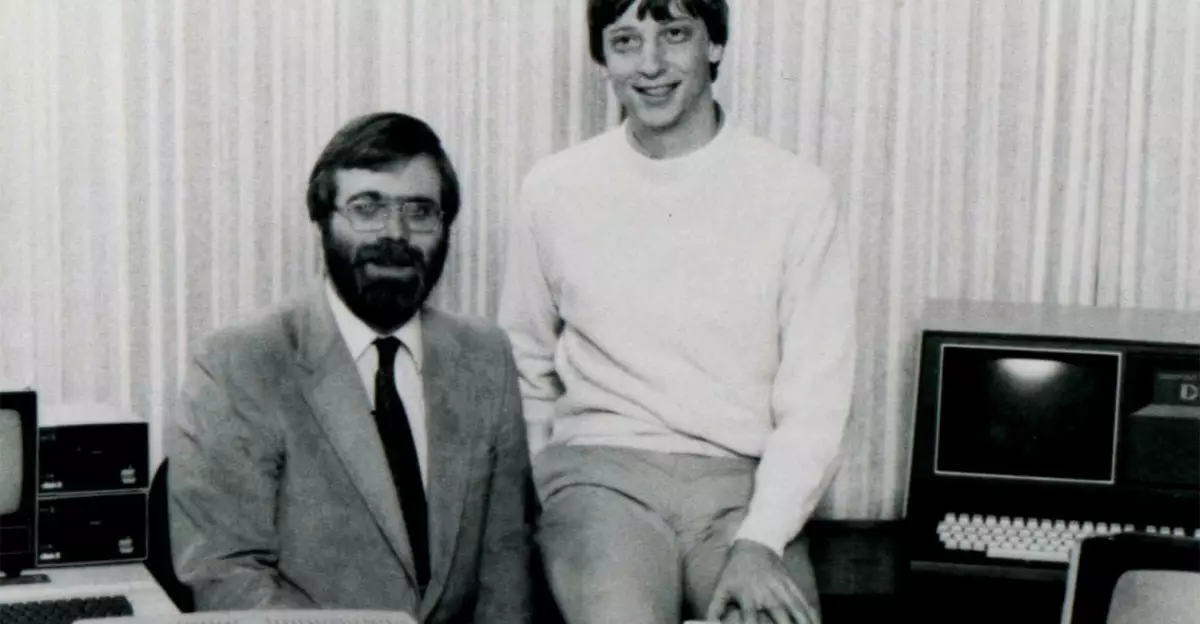In the landscape of technology, few entities have undergone a transformation quite like Microsoft. Founded on April 4, 1975, by Bill Gates and Paul Allen, what began as a modest venture focused on developing software for microprocessors quickly morphed into an expansive empire of technological innovation. The initial product, Altair BASIC, catered to the nascent personal computer market, but Microsoft’s vision extended far beyond. This early aspiration set the stage for a trajectory that would redefine the way we interact with technology.
The partnership with IBM in 1980 marked a pivotal moment. By providing the software for IBM’s first PC, Microsoft capitalized on the burgeoning potential of personal computing. MS-DOS emerged not merely as an operating system but as the cornerstone of Microsoft’s future dominance. The company showed a remarkable ability to adapt, capturing the market by offering a software suite tailored to the needs of an increasing number of PC users. It was the birth of a giant, a narrative driven by foresight and relentless innovation.
Windows: The Game Changer
The launch of Windows 3.0 in 1990 was a significant evolution for Microsoft. However, it was the highly anticipated debut of Windows 95 that truly revolutionized the computing experience. With its user-friendly graphical interface and iconic Start Menu, Windows 95 generated a fervor reminiscent of a cultural phenomenon, with consumers eagerly queuing up to acquire their copy at midnight. This wasn’t merely the release of an operating system; it was a statement—signifying that personal computing could be accessible and enjoyable for everyone.
Windows’ success was more than just bells and whistles; it was built on a foundation of enhanced productivity. The introduction of integrated applications and features like File Explorer fundamentally changed how users interacted with their computers. Combining visual appeal with practical functionality, Windows 95 laid the groundwork for an enduring legacy that saw updates and improvements across generations. The ripple effect of this operating system continues to be felt today, as elements introduced then remain central to the user experience.
The Evolution of Office: Empowering Productivity
Complementing its operating systems, Microsoft turned its sights towards productivity software. The Office suite debuted in 1989, initially for Mac, but soon became a staple for Windows users as well. This suite encapsulated the concept of productivity in a digital age, allowing users to create, manage, and collaborate more efficiently than ever before. It is a testament to Microsoft’s adaptability that Office could evolve from a simple suite of applications into a cloud-based powerhouse used by billions across various devices.
With the advent of Office 365, Microsoft redefined what productivity software could be. By embracing the cloud, Microsoft ensured that users had access to their documents anywhere, promoting a seamless experience that shifted the paradigm of traditional office work. As the demands of the modern workforce have evolved, so too has Microsoft, demonstrating an uncanny ability to pivot and innovate in response to changing needs.
Exploring New Horizons: Gaming, Cloud Computing, and More
Microsoft’s journey is not solely defined by software. The launch of the Xbox in 2001 marked the company’s foray into gaming, blending hardware and entertainment to create a holistic user experience. This move showcased Microsoft’s adaptability and understanding of consumer trends. As gaming became a significant cultural force, Microsoft carved out its space, while also laying the groundwork for future innovations in cloud gaming and multiplayer experiences through Azure.
Azure’s launch in 2008 transitioned Microsoft into the cloud computing arena, allowing businesses worldwide to harness the power of cloud technologies. This strategic move not only diversified Microsoft’s portfolio but positioned it as a leader in cloud services, catering to the needs of enterprises navigating a digital transformation.
Your Future is AI
As Microsoft celebrates its 50-year legacy, the focus increasingly shifts toward artificial intelligence. The integration of AI into its products and services is not just a trend—it represents a fundamental shift that could redefine how users interact with their devices and software. AI’s potential to augment productivity and streamline operations across platforms is immense, paving the way for innovations we have yet to imagine.
The recent unveiling of new Copilot features during Microsoft’s anniversary celebration signifies this commitment to AI. By pushing the boundaries of what technology can achieve, Microsoft is not simply resting on past laurels but is actively engaged in shaping the future of technology.
In essence, Microsoft’s journey from a small software company to a global leader illustrates the power of vision, dedication, and innovation. The next chapter promises to be as impactful as the last five decades, as we eagerly anticipate how this tech giant will continue to mold the future of technology.

